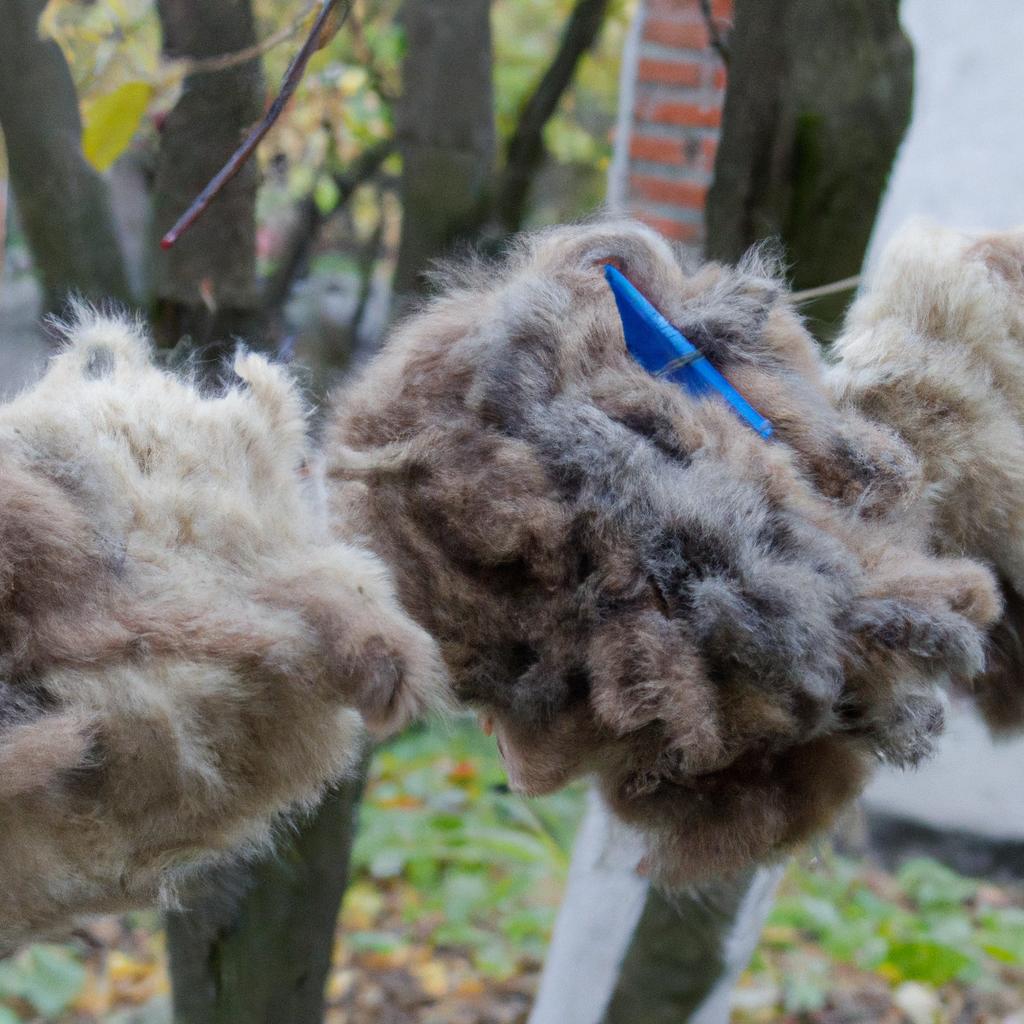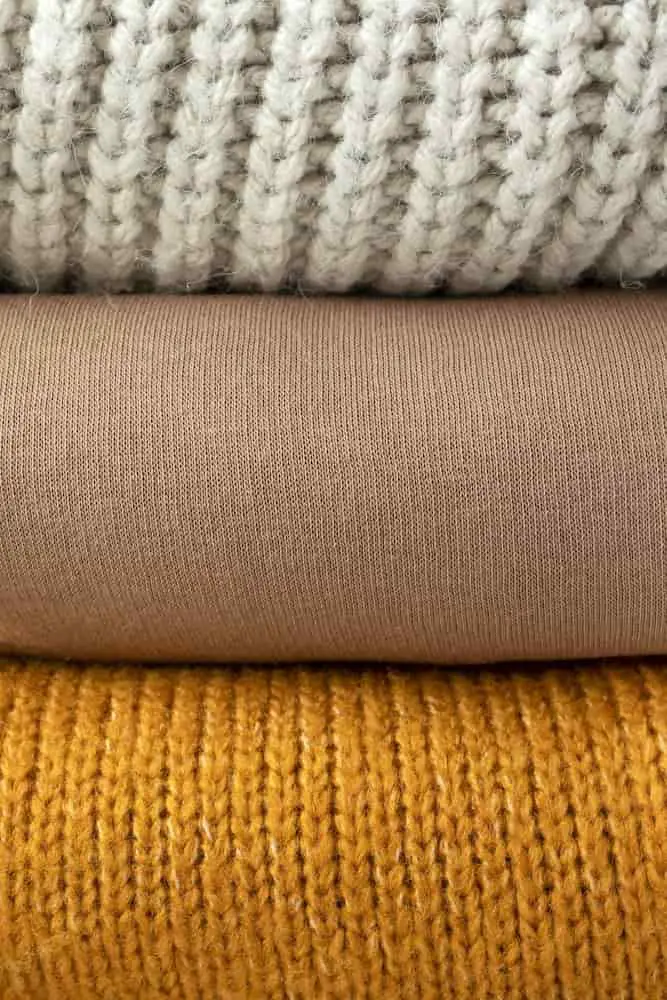Are you wondering how long it takes wool to dry? If so, you’ve come to the right place! As an outdoor expert, I’m here to provide all the information you need on this essential topic.
Wool is a great fabric for keeping warm in cold climates and can be excellent for layering when outside. But knowing how long it takes your wool garments or blankets to dry is key to staying comfortable during any adventure – especially if they get wet unexpectedly!
The amount of time it takes for wool to dry can vary depending on a number of factors such as the type of wool, the amount of moisture it has absorbed, and the environmental conditions. However, in general, it can take anywhere from a few hours to several days for wool to dry completely.
For example, some people report that a wool sweater can take up to 24 hours or longer to dry, while others indicate that raw wool can take one to three days to dry depending on the temperature and humidity of the drying area.
It’s important to take care when drying wool to prevent damage, and to allow the garment or material to dry naturally in a well-ventilated area away from direct sunlight or heat sources.
In this article, we’ll explore exactly that: How long does wool take to dry? So let’s dive in and learn more about drying time for this useful material.
Factors Affecting Drying Time
When it comes to drying your wool clothing, several factors can affect how long the process takes, including:
- Humidity: High humidity slows down the evaporation process, which can prolong the drying time.
- Temperature: Higher temperatures increase the rate of evaporation and can accelerate the drying process.
- Airflow: Good airflow helps to remove moisture from the wool and can speed up the drying process.
- Absorbency: The absorbency of the wool affects how much moisture it can hold, which can influence the drying time.
- Wool thickness: Thicker wool may take longer to dry than thinner wool due to the higher amount of water it can retain.
- Water temperature: The temperature of the water used to wash the wool can affect how quickly it dries.
- Type of wool: Different types of wool have different properties that can affect the drying time. For example, merino wool is known for its quick-drying properties.
- Amount of wool: The more wool you are trying to dry, the longer it will take, as there is more moisture to evaporate.
- Sunlight: Direct sunlight can help speed up the drying process, as it can increase the temperature and provide additional airflow. However, too much sunlight can damage the wool fibers.

Heat levels, humidity levels, agitation levels and air flow all contribute to how quickly wool will dry.
Additionally, fabric thickness also has an impact on the total drying time of your garments.
Keeping these elements in mind is key for achieving optimal results when looking to get those items back into rotation as soon as possible.
Knowing exactly what kind of care instructions are required will ensure that you don’t over-dry or even worse damage your beloved apparel!
Care Instructions
Washing wool is essential for keeping it looking its best; use a mild detergent and warm water. When it comes to drying wool, avoid heat and air dry it flat. For storing wool, fold it neatly and keep it in a dry, dark place.

Washing Wool
When it comes to caring for your wool clothing, washing is a must. But don’t worry – with the right techniques and pre-treatment methods, cold water washing doesn’t have to be daunting!
To start off, spot treat any stains before you toss your garment in the sink. Then fill up the basin with cool water and add a gentle detergent or wool wash liquid. Once everything’s mixed together, let the item soak for 15 minutes.
After that, rinse out all of the soap residue until the water runs clear and then roll it up in an old towel to get rid of excess moisture.
Finally, hang your piece outdoors or indoors on a drying rack; depending on air temperature and humidity levels this could take anywhere from 12-24 hours to dry completely – so make sure you give yourself plenty of time prior to wearing again!
Drying Wool
Once your wool garment is washed and all of the soap residue has been rinsed out, it’s time to dry it!
The best way to do this is by laying it flat on a clean towel, or hanging it up outdoors.
Avoid using fabric softeners as they can damage delicate knitting techniques and leave a waxy coating that’ll make the material stiff.
If you want to keep the fibers feeling silky-soft though, make sure you add one capful of fabric softener into your washing water – just don’t forget to rinse thoroughly after!
When drying outside, take advantage of natural sunlight and hang your item on a clothesline so air can circulate around it while also avoiding direct heat sources like radiators.
Not only will this help preserve its shape but give you that extra sense of freedom too!
Storing Wool
Now that you’ve got your wool item washed and dried, it’s time to store it away until next season!
To ensure its quality lasts for years to come, make sure you keep it out of washing machines and avoid exposing it to high temperatures. Instead, find a space with good air circulation so moisture can be released properly.
A closet or drawer will do just fine – just don’t forget about temperature control either. That way, your favorite piece won’t become stretched or misshapen over time.
So go ahead and enjoy the freedom of knowing that your garment is safely stored away without worry!
Drying Methods
When it comes to drying wool, there are a few different methods you can use.
Air drying is the most common and typically takes between 12-24 hours depending on the size of your garment.
Heat treating is also an option if you want to speed up the process – just be sure not to over-dry as this could damage the fabric or shrink it!
Wool washing is another great way to get rid of any dirt or stains that may have built up during wear, while moth proofing will help protect against moths in storage.
No matter which method you choose, make sure that you read all care instructions for your specific item before beginning.
Properly caring for wool garments will ensure they last longer and look better with each wear!
With proper techniques, you’ll find that drying your wool items becomes easier every time.
Now let’s discuss troubleshooting tips to make sure everything goes smoothly when drying your wool garments.
Troubleshooting Tips
Sometimes, drying wool can be a tricky task. To make sure your fabric dries quickly and properly, it’s important to pay attention to the airflow rate, humidity levels, temperature control, soap choice and fabric weight of the item you’re trying to dry.
Skilled outdoor experts know that higher temperatures will cause wools to shrink or distort – which is why controlling the environment with proper ventilation is key. Additionally, using a gentle detergent specially formulated for woolen fabrics can help prevent irreparable damage while still providing deep-cleaning power.
By considering all these factors when attempting this process, you’ll ensure your garments are extra clean and free from any shrinking or distortion. So take some time before tackling this job – as investing in adequate preparation now could save you lots of headaches down the road!
Frequently Asked Questions
How Often Should I Wash My Wool Garments?
When it comes to caring for your wool garments, there are some key things to keep in mind. First and foremost, the frequency of washing depends on how often you wear them–as well as any potential stain removal or odor control needed.
Generally speaking, most people tend to wash their wool items every few weeks or so. To ensure proper fiber care and fabric longevity, remember to use a gentle detergent with cold water settings and avoid fabric softeners.
With these simple tips at hand, you’ll be able to maintain your wool garments while enjoying the freedom that only clean clothing can bring!
What Is The Best Way To Store Wool Clothing?
As an outdoor expert, I can tell you that storing wool clothing properly is like a game of chess – it requires careful thought and planning.
To avoid shrinkage, dyeing the fabric beforehand is a must. Additionally, washing tips should be followed to further prevent damage or fading.
For long-term storage, use moth repellent with cedar chips and steam ironing for extra protection against moths.
Lastly, don’t forget to air out your garments every once in awhile so they retain their original shape and size!
With these simple tricks up your sleeve, you’ll always have beautiful wool clothes on hand for any adventure life throws at you!
Is There A Way To Speed Up The Drying Process?
As an outdoor expert, I’m often asked how to speed up the drying process of wool clothing. The answer depends on a few factors: washing frequency, drying tips, fabric care, moisture levels and temperature control.
To increase efficiency when it comes to drying time, try decreasing your load size and increasing spin cycles during the wash process – this will reduce excessive moisture in your garments before they even hit the dryer.
Remember that too much heat can damage delicate fabrics like wool, so ensure you keep temperatures low while still achieving maximum airflow.
Following these steps will help free up more time for enjoying life outdoors!
Are There Any Risks Associated With Air-Drying Wool?
Air-drying wool is an excellent way to protect delicate fabrics and maintain the integrity of your garments, but it’s important to follow a few basic washing tips.
Temperature control is key when air-drying as too much heat can cause damage – be sure to avoid direct sunlight or intense heat sources!
Additionally, fabric softeners should also be avoided as they can reduce the elasticity in wool fibers.
Pre treating stains with cold water before drying will help keep them from setting into the fabric.
By following these simple steps you can ensure that your treasured woolen items remain safe from damage while giving you the freedom to enjoy their beauty for years to come.
Can I Put My Wool Items In The Dryer?
As an outdoor expert, I’m often asked if it’s safe to put wool items in the dryer.
The answer is yes – but with a few ironing tips.
Before putting your wool garments or blankets into the dryer, be sure to use fabric softeners to protect them from shrinkage and damage due to temperature control fluctuations.
Additionally, spot cleaning is important before drying so that dirt isn’t left behind on the garment when it goes through the heat cycle of the dryer.
With these simple methods, you can safely enjoy air-drying your favorite wool items!
Conclusion
As an outdoor expert, I’ve come to know that wool garments should be washed as little as possible.
Air-drying is the ideal method for preserving the fibers of your clothing and helping them last longer.
It can take anywhere from a few hours up to two days for wet wool items to dry completely, depending on temperature and humidity levels.
To speed things along, you can lay out your garments in direct sunlight or use a fan if indoors.
But it’s important not to rush this process since rapid drying may cause shrinkage or damage to delicate fabrics.
If you must put your woollens in the dryer, make sure you set it on low heat and check frequently until they’re fully dried.
With proper care and maintenance, your woollen clothes will stay looking beautiful for years to come!




